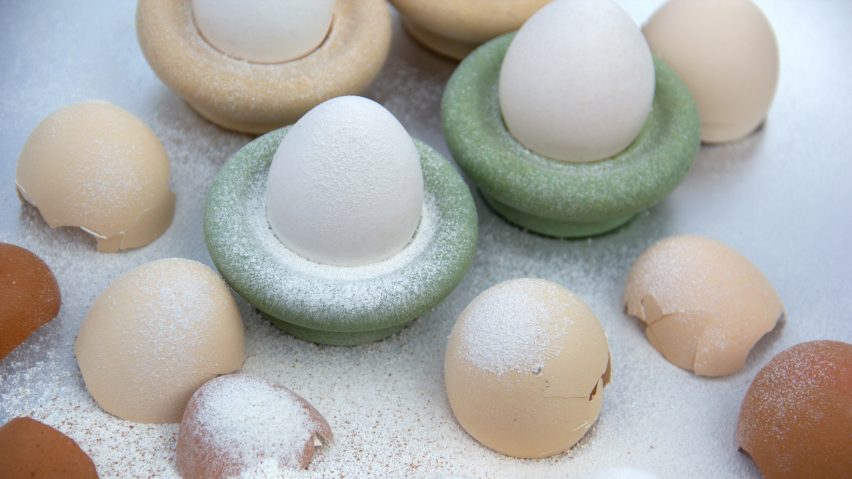
Eight trends from Dutch Design Week including eggs and AI objects
As this year's Dutch Design Week draws to an end, Dezeen editor-at-large Amy Frearson identifies eight key trends, including products made out of eggs and hybrid objects designed by artificial intelligence.
Dezeen is the media partner for Dutch Design Week, which took place in Eindhoven from 21 to 29 October.
This year's event featured the work of more than 2,600 designers, in 110 locations around the city.
Other key themes included bricks produced through innovative use of waste materials, homeware that takes cues from social-media culture and a new form of digital craft.
Read on to discover all eight trends:
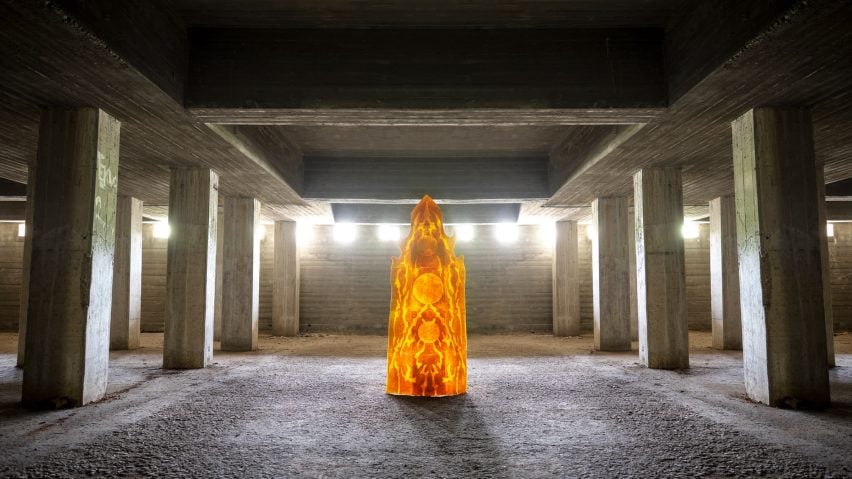
Eggs everywhere
Eggs are proving to be just as versatile as a biomaterial as they are in cooking.
Various projects on show explored new ways of utilising egg shells. These included a playful light bulb design by Dutch designer Ruben De Haas and compostable egg cups by Istanbul-based Atelier Barb, which were made by combining waste shells with starch-based binders.
Design Academy Eindhoven (DAE) graduate Adam Bialek, meanwhile, has found a way of crystalising egg yolks to create a material that combines light porosity with a rich golden colour.
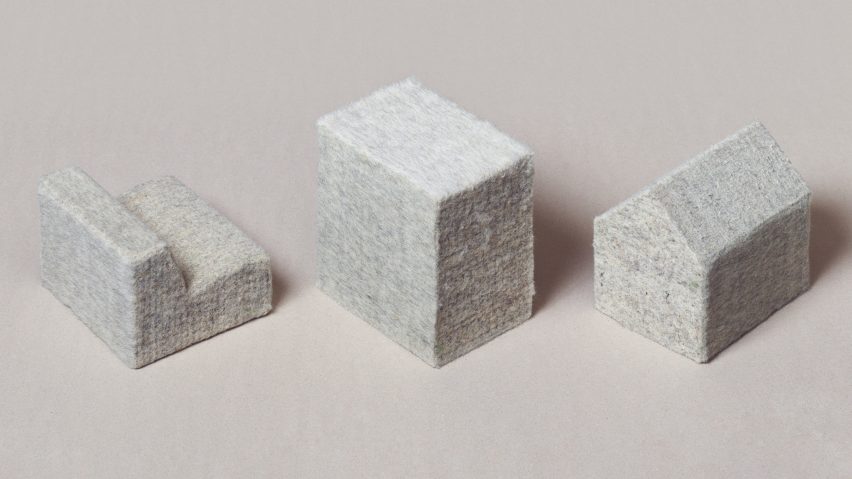
Forget foam
One of the main challenges facing the furniture industry is how to find a more sustainable alternative to the polyurethane foam that is typically used in upholstery, which has limited recycling potential.
Designers have been exploring how other materials could offer a substitute without compromising on comfort.
Among them is Dutch designer Christien Meindertsma, who has been experimenting with new methods of felting to turn under-utilised wool into soft blocks that can be cut into different shapes. Another is Central St Martins graduate Yash Shah, who has developed shock-absorbent cushions for the automotive industry using thermoplastic elastomers.
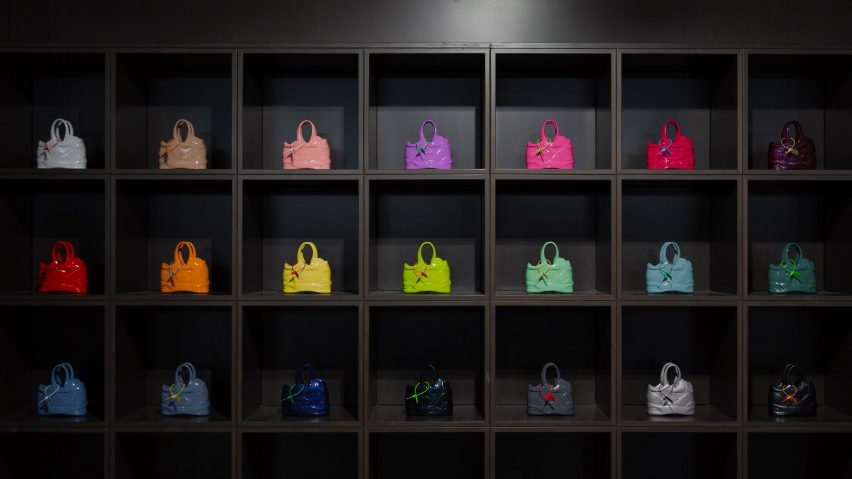
AI object hybrids
The arrival of generative artificial intelligence has equipped designers with a highly effective tool for creating designs that draw from a range of source images.
Designers have been exploiting this, using AI to design unusual hybrids of existing products. The results are intended to challenge stereotypes and provoke questions about authenticity.
Key projects include fashion accessories by DAE graduate Niels Nijman, which were developed by inserting keywords like Louis Vuitton, Gucci and Air Max into an AI image generator, and a series of "gender-fluid" razors by ÉCAL graduate Luis Rodriguez, created by combining elements of both male and female products.
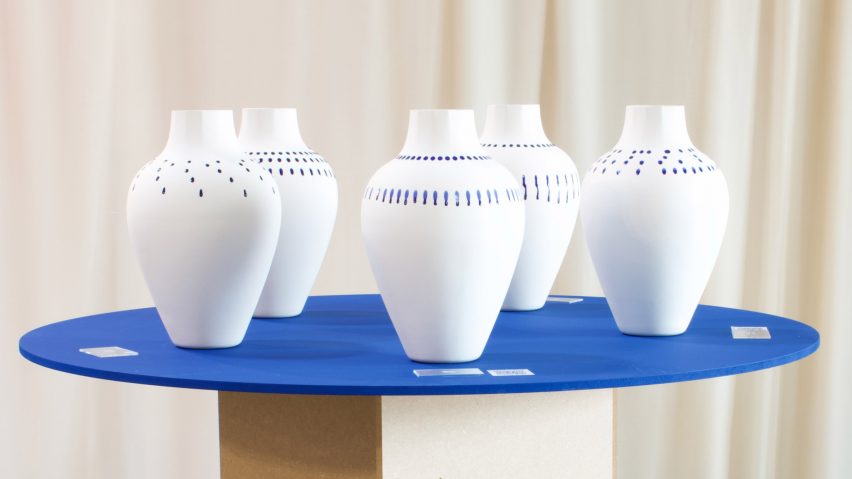
Mass customisation
As digital manufacturing techniques become increasingly sophisticated, it has become more possible to bring individuality to mass-produced objects. The result is a new form of digital craft.
Examples on show at Dutch Design Week included a series of 100 vases by Studio Joachim-Morineau, each decorated in a different pattern thanks to the studio's specially developed dripping machine.
Another came from DAE graduate Yufei Gao, who has created a set of 92 terracotta pots that are all slightly different because their shapes are defined by weather data.
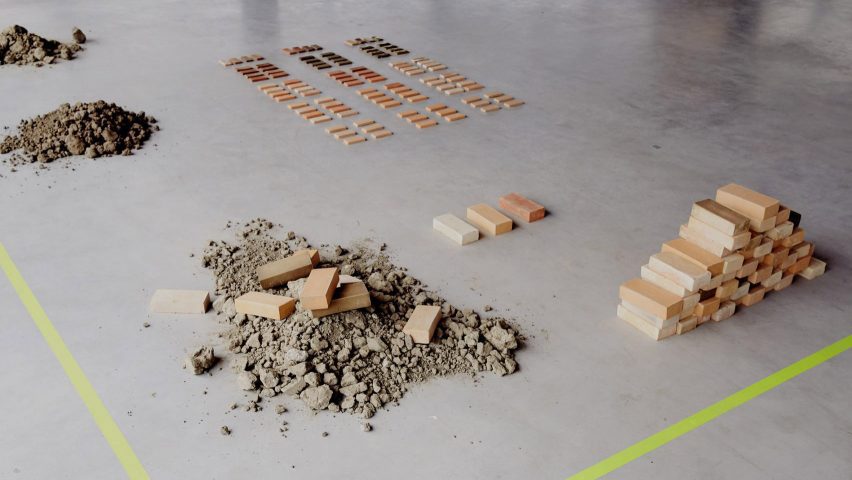
Better bricks
Dezeen has published numerous stories about bricks produced from waste materials, yet designers, manufacturers and material scientists are still identifying new possibilities.
Claybens, a project by Emy Bensdorp, demonstrates how turning contaminated clay soil into bricks offers a way of eradicating toxic PFAS "forever chemicals" from the environment.
Elsewhere, the Dezeen Awards-shortlisted YiBrick from Chinese studio Yi Design gives a second life to ceramic waste from 100 different factories.
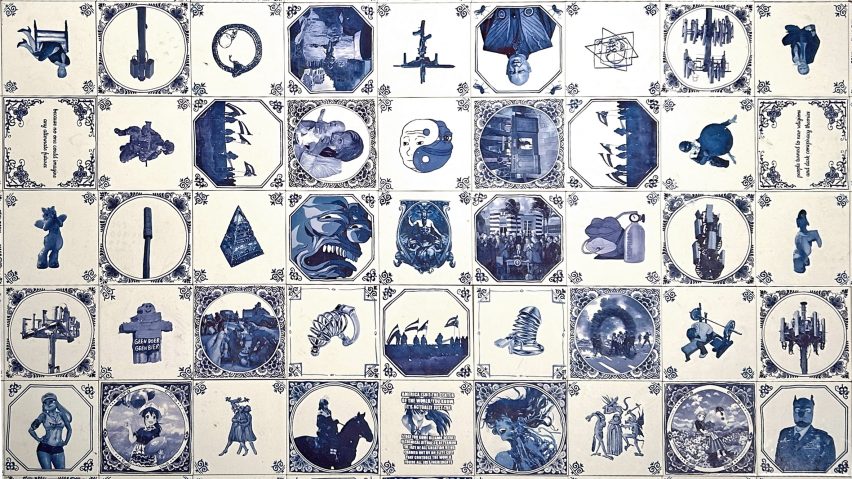
Celebrating social media culture
Social media has fundamentally changed the way that people consume digital images and information, but what if this culture also extended to our physical environment?
Some designers at Dutch Design Week suggested answers to this question by revealing homeware designs that reference social media culture.
Highlights included a collection of Delft-style tiles depicting images from "the radical underbelly of the internet" by artist Tibor Dieters, and a series of cushions by graphic designer Merel Dijkman informed by cancel culture.
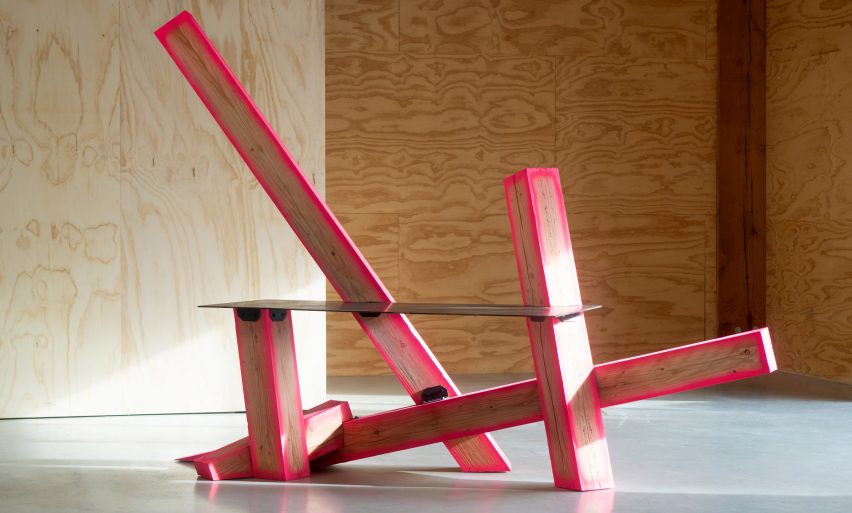
Adventures in neon
There was no shortage of colour at this year's Dutch Design Week, with neon brights on show like never before.
A key advantage of these shocking shades is that you can make an impact without applying colour to everything, so an object's materiality can still be revealed.
Dutch designers Kiki van Eijk and Joost van Bleiswijk had several examples on show in their studio, although the most striking was a collection of geometric furniture with hot-pink edges, made from building construction offcuts.
Another noteworthy example came from Berlin-based designer Giulia Toneguzzo, who used a custom-developed airbrush technique to add shades of orange and yellow to her Spektrum shelves.
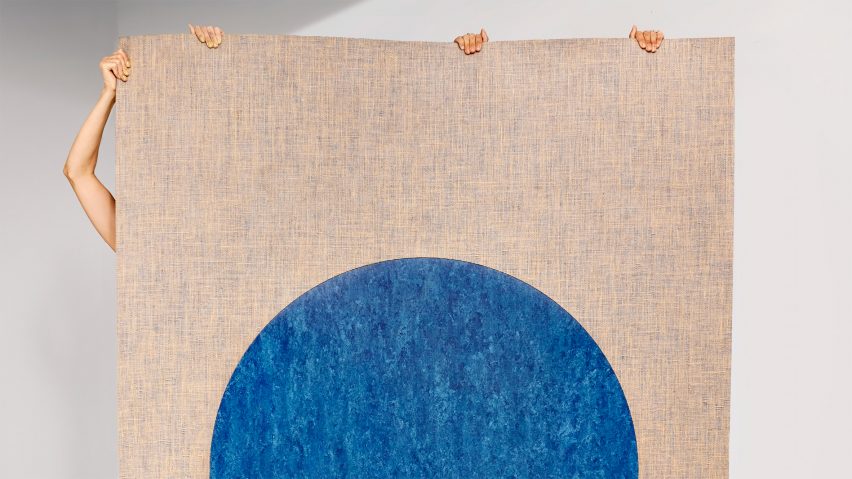
Focus on flooring
French manufacturer Tarkett made a big impression at Dutch Design Week thanks to products on show at two locations, both demonstrating how flooring design can adapt to a circular economy.
A collaboration with Dutch design duo Studio Rens explored different applications of lino, aiming to "uncover the hidden facets" of the material. This resulted in striking material juxtapositions, in both striped and circular motifs.
Elsewhere, a key element of the Dutch Design Week business lounge installed by design studio Daphna Laurens was Tarkett's Desso carpet tiles, developed with designer Patricia Urquiola. Once the event is over, the brand said it will reuse this multi-tonal flooring elsewhere.